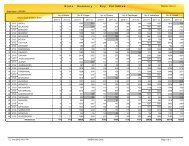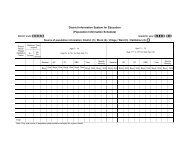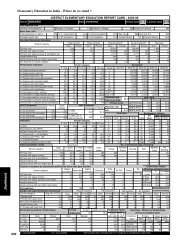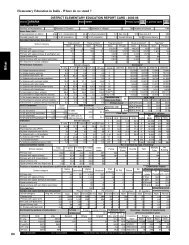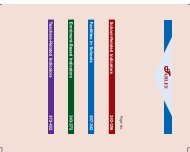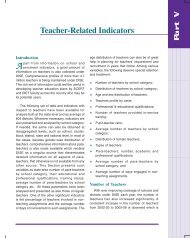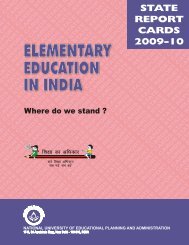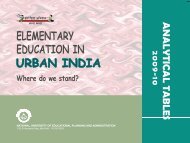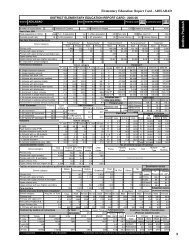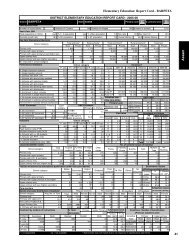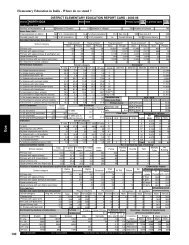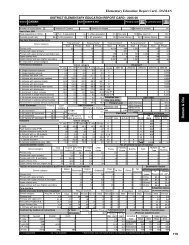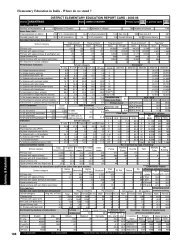Volume II - DISE
Volume II - DISE
Volume II - DISE
Create successful ePaper yourself
Turn your PDF publications into a flip-book with our unique Google optimized e-Paper software.
collection system. However, a few states at their own initiative have extended the coverage of<br />
<strong>DISE</strong> even to unrecognised schools in their states.<br />
b) School building: The classification of schools is also presented in terms of the number of school<br />
buildings and their type. Schools having more than one type of building structures are counted<br />
under the category of 'Multiple Type Building'.<br />
c) Teachers in position: The analysis of teachers' data is in terms of the teachers shown as 'in position'.<br />
The distribution of teachers in terms of educational qualifications has been presented separately<br />
for teachers and contractual-teachers. Teachers include TGTs, Head Teachers, Center Head<br />
Teachers, regular and temporary primary/elementary teachers, subject teachers such as: Art &<br />
Craft Teachers, Oriental Teachers, Language Teachers, Drawing Teachers, Music Teachers,<br />
Computer Instructors, and Physical Education Teachers. Community teachers, voluntary teachers,<br />
Guruji, are included amongst contractual-teachers. The analysis of teachers' data for in-service<br />
training is presented for all teachers including contractual-teachers.<br />
d) Mediums of instruction: The District Report Cards present the number of children studying through<br />
various mediums of instruction by category of schools. Data for four major mediums of instruction<br />
are presented in the Report Cards and if a district has more than four mediums of instruction,<br />
these have been presented under the category, 'Others'. However, under reporting of enrolment<br />
by mediums of instruction is observed in a few districts. Hence, the same may not present the true<br />
picture of enrolment by mediums of instruction and be treated as incomplete and is applicable to<br />
schools those who have reported information and not to all the schools in the district.<br />
e) Schools, villages, blocks and clusters: The number of blocks, villages and schools is based on<br />
the initialized entities in the <strong>DISE</strong> software. The list of blocks, villages and schools is created at<br />
the time of <strong>DISE</strong> implementation and is updated annually. The number of clusters refers to the<br />
mapped entities with the blocks. Some states have often reorganised clusters. Towns and<br />
municipalities have been classified as separate blocks.<br />
3.2 Formulae Used<br />
The main indicators presented in the Report Cards have been derived by using the following illustrative<br />
formulae. The derivations are given for schools in primary category only. The same method is applied for<br />
other categories and classificatory groups.<br />
Primary schools having single classroom<br />
1. % Single-classroom schools = x 100<br />
Total primary schools<br />
Primary schools with single teacher in position<br />
2. % Single-teacher schools = x 100<br />
Total primary schools<br />
Primary schools having student classroom ratio ≥ 60<br />
3. % Schools with SCR ≥ 60 = x 100<br />
Total primary schools<br />
Primary schools having pre-primary sections<br />
4. % Schools with pre-primary = x 100<br />
sections<br />
Total primary schools<br />
Primary schools having common toilet<br />
5. % Schools with common = x 100<br />
toilet<br />
Total primary schools<br />
xix




